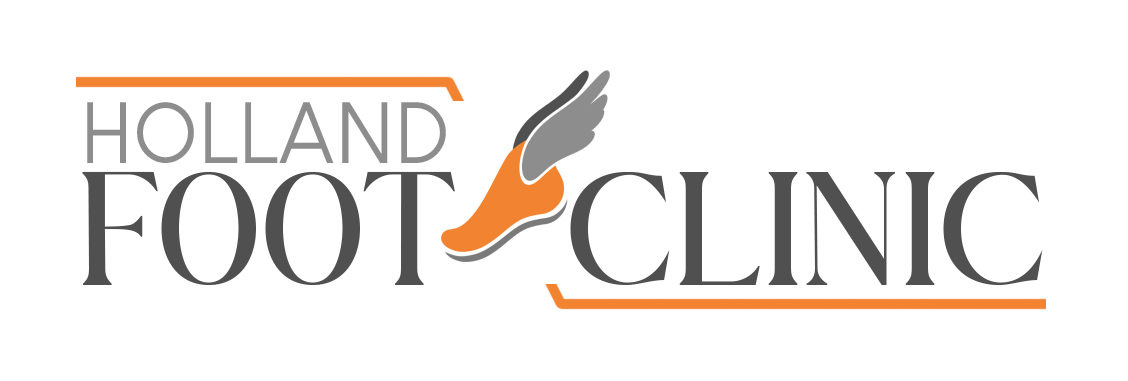Shockwave Therapy
Shockwave therapy, also known as Extracorporeal Shockwave Therapy (ESWT), is a non-invasive treatment that uses sound waves to stimulate healing in musculoskeletal tissues. In podiatry, it is commonly used to treat chronic foot and ankle conditions that have not responded to conservative treatments.
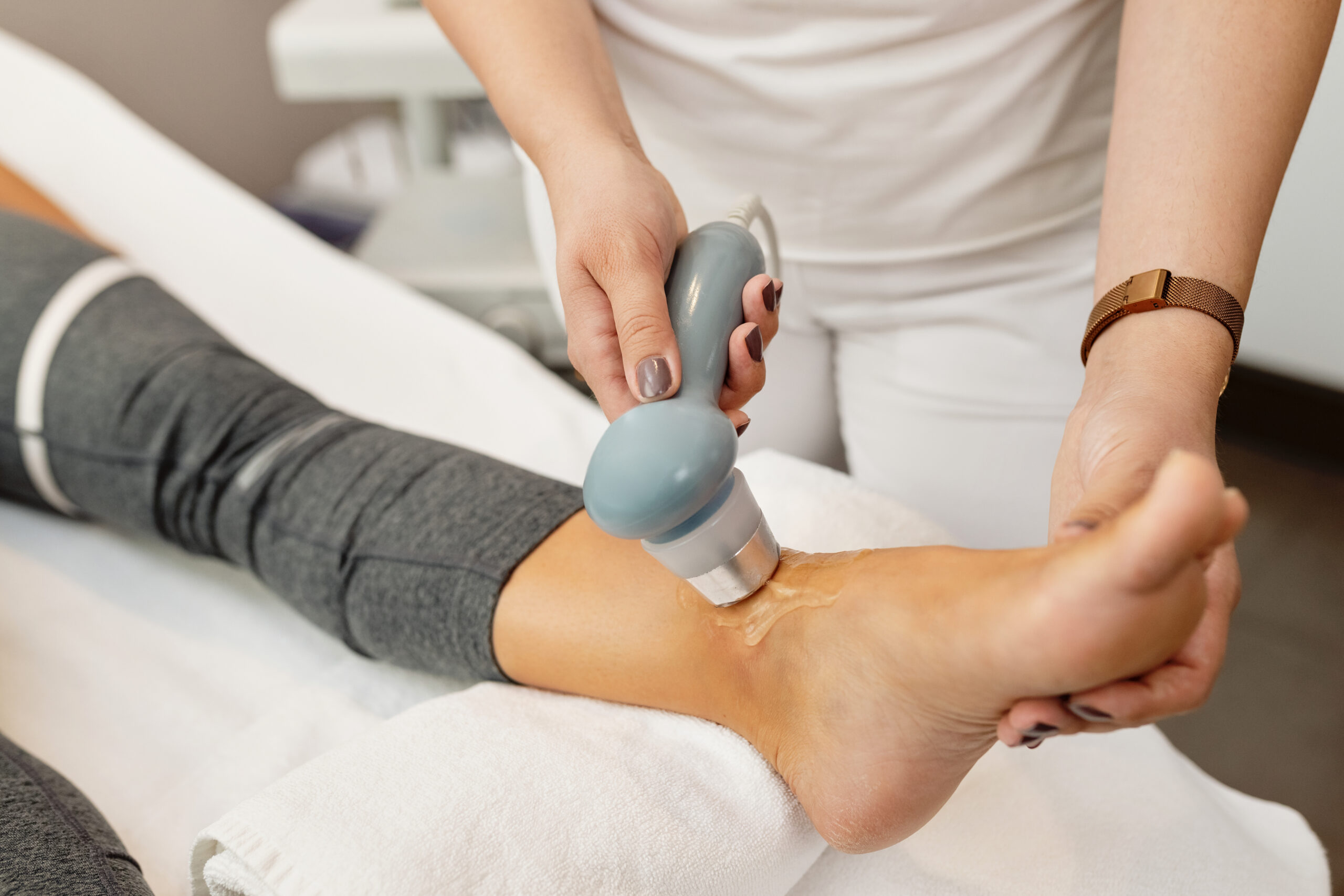
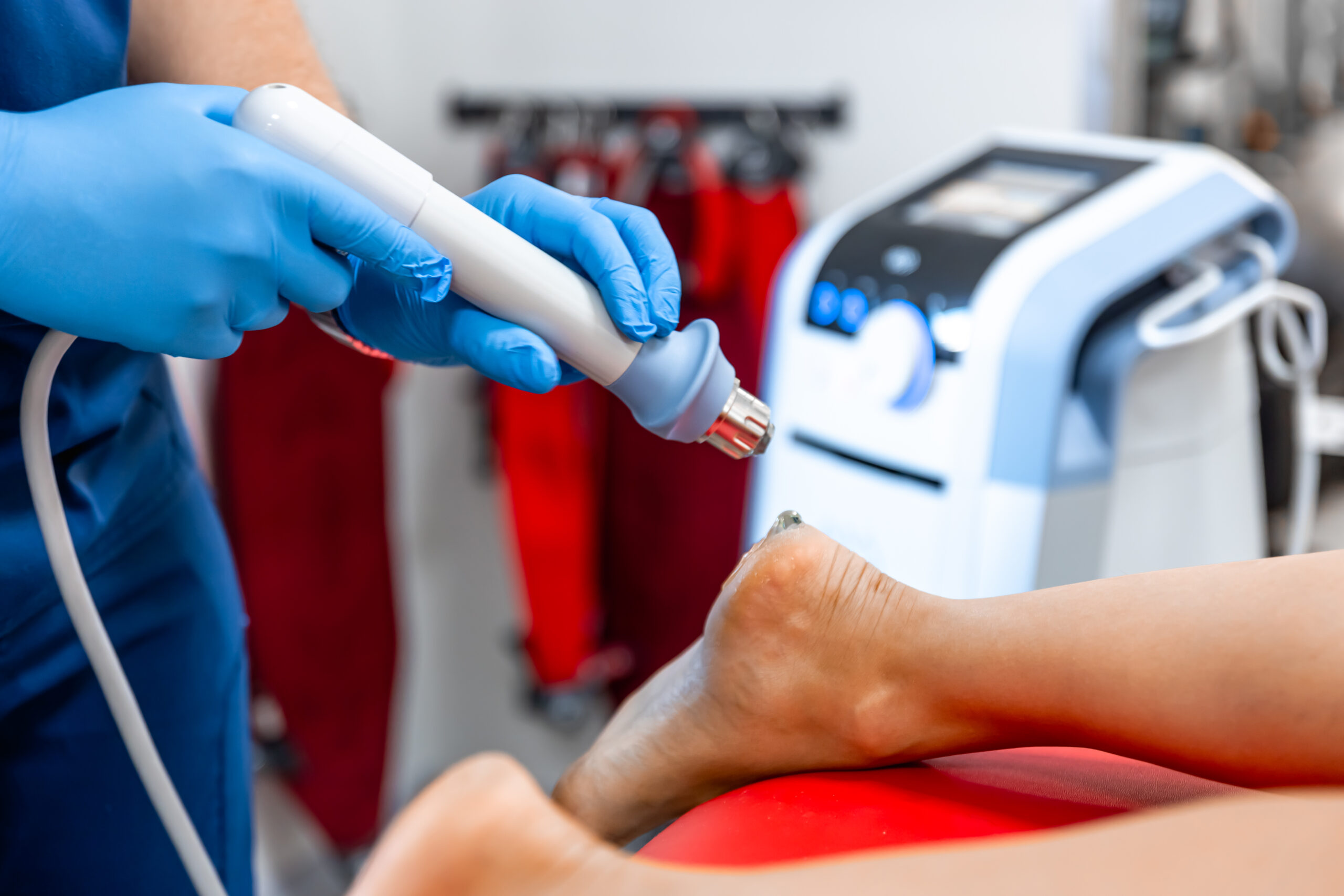
What Is Shockwave Therapy (in Relation to the Foot)?
Shockwave therapy delivers high-energy acoustic waves to targeted areas of the foot. These
waves stimulate:
● Increased blood flow
● Cellular repair
● Collagen production
● Pain reduction via neural modulation
The therapy induces microtrauma, triggering the body’s natural healing response, which is particularly valuable in areas of poor vascularization, like tendons and fascia.
Common Foot Conditions Treated with Shockwave Therapy
Shockwave therapy is effective for chronic or recalcitrant conditions, such as:
1. Plantar Fasciitis
● One of the most common uses.
● Helps reduce heel pain by promoting healing in the plantar fascia.
2. Achilles Tendinopathy
● Both insertional and mid-portion types.
● Stimulates tissue regeneration and decreases inflammation.
3. Heel Spurs
● Especially when associated with plantar fasciitis.
4. Metatarsalgia
● Can relieve pain from inflamed metatarsal heads.
5. Morton’s Neuroma (less commonly)
● May help reduce nerve-related pain when combined with other treatments.
6. Posterior Tibial Tendon Dysfunction (PTTD)
● Used adjunctively in early stages to support tendon recovery.
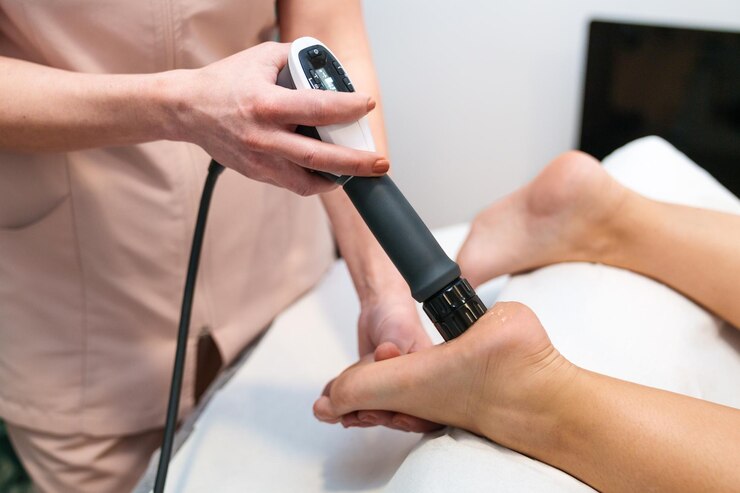
Correlation with Other Treatment Options
Shockwave therapy is not a standalone treatment in most cases. It’s often integrated into a broader care plan. Here’s how it fits with other options:
Conservative Treatments:
- Foot orthoses: To correct biomechanics and offload stressed tissues.
- Stretching and strengthening: Particularly calf and plantar fascia stretches.
- NSAIDs: May be used initially, although some protocols recommend avoiding them before or after ESWT to not interfere with inflammation/healing.
- Rest and activity modification.
Adjunct to Physiotherapy:
● Shockwave complements manual therapy, taping, and exercise-based rehab.
● Physios often use it to help break a pain cycle or to treat a recalcitrant tendon pathology before progressing exercise loads.
● Especially helpful during “mid-phase” rehab — when pain is impeding the next steps of recovery.
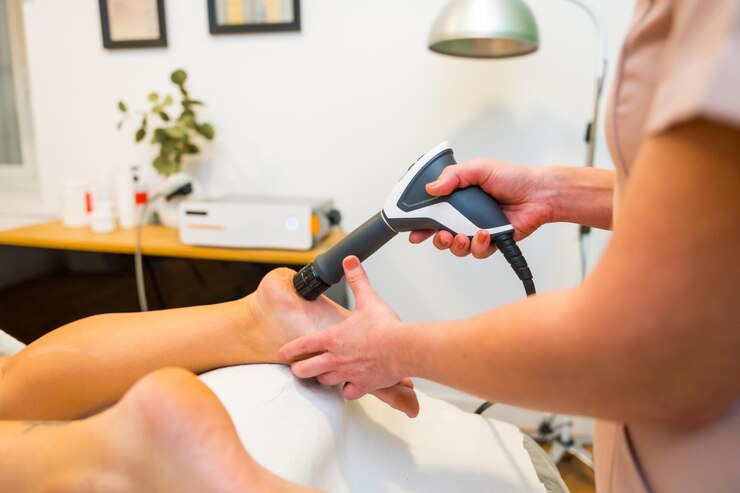
Contraindications & Considerations
Not advised for patients with:
● Blood clotting disorders
● Nerve or vascular disorders in the target area
● Acute inflammation or infection
● Pregnancy
Patients may experience temporary pain or skin redness.
Role of the Chiropodist
As a chiropodist, you play a key role in:
● Assessing candidacy for shockwave therapy
● Delivering ESWT when trained/certified
● Coordinating care with physiotherapists, especially for tailored rehab post-therapy
● Monitoring treatment response and adjusting orthoses, footwear, or exercise plans
accordingly
Testimonials
What Our Clients Say
Call Today
(289) 290-3668
